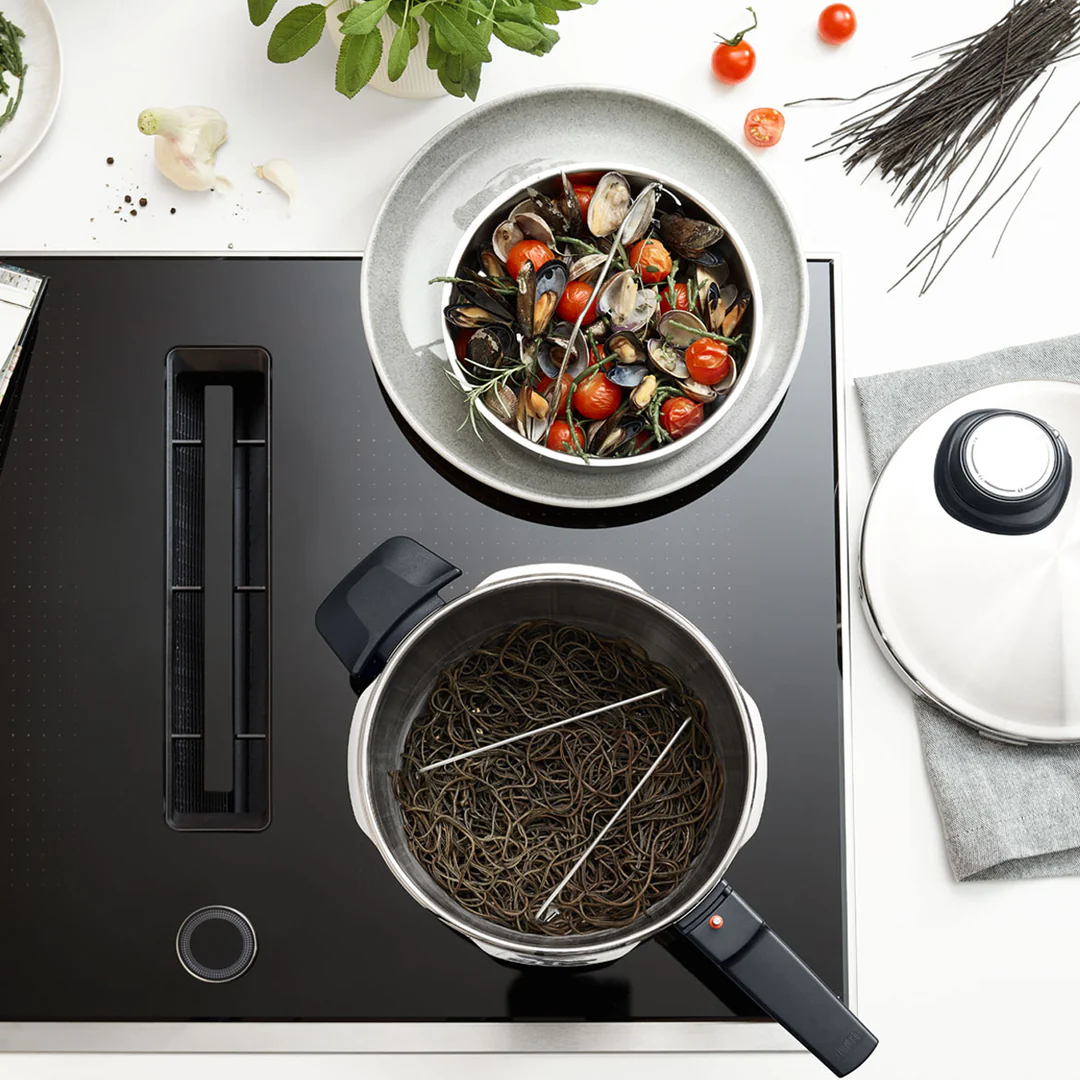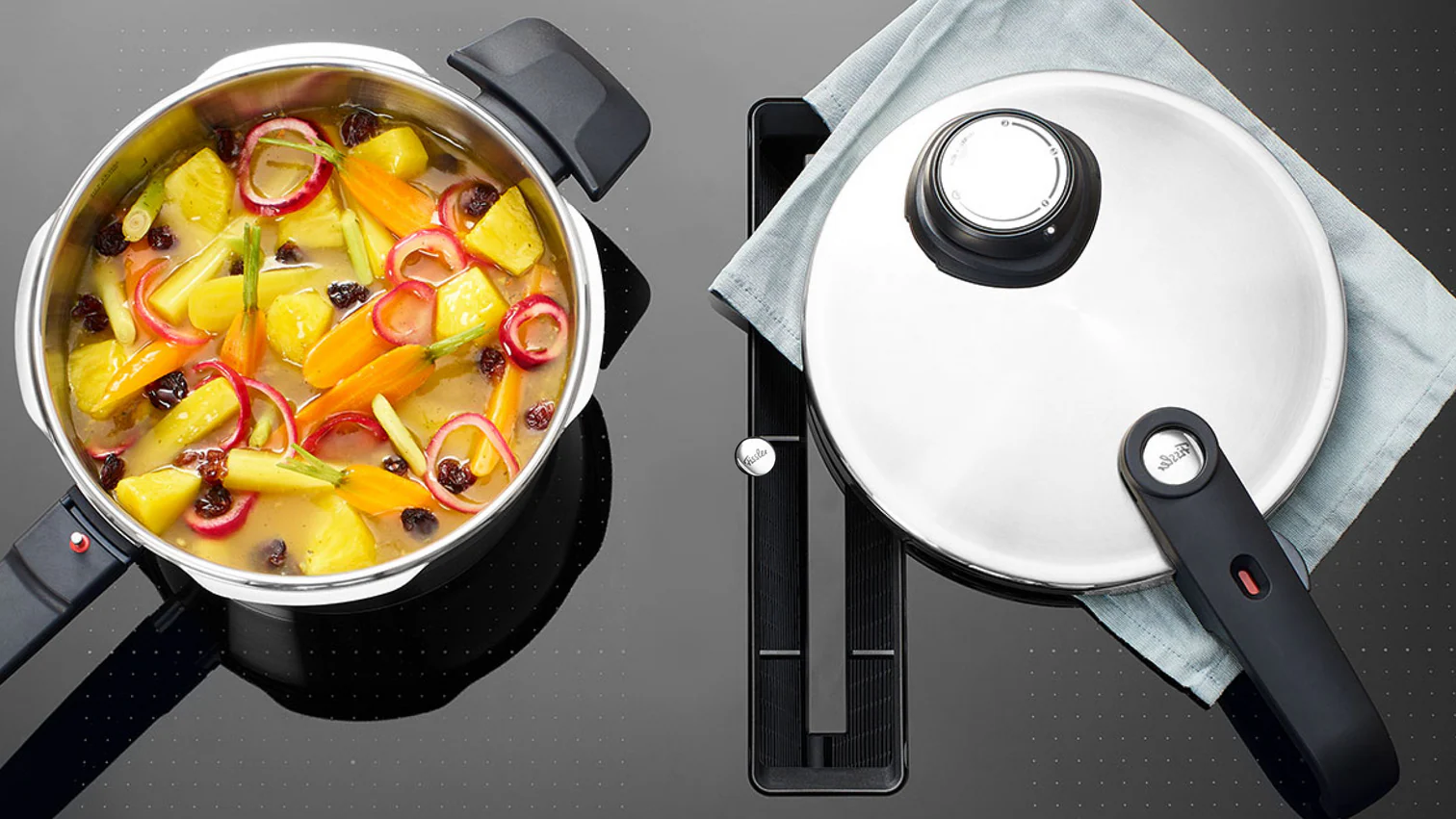Welcome to the wonderful world of pressure cooking! If you’re holding a shiny new pressure cooker, you’re on the verge of unlocking faster, more flavorful, and incredibly tender meals. It’s a true kitchen game-changer. But let’s be honest, that first time you hear the hiss and see the steam can be a little intimidating. One of the most common questions we hear from beginners is, What Does It Mean To Vent A Pressure Cooker? Don’t worry, it’s far simpler and safer than it sounds. Think of this guide as your friendly co-pilot, here to demystify the process and turn you into a confident pressure-cooking pro.
A Quick Trip Back in Time: The Pressure Cooker’s Journey
Before we dive into the “how,” let’s appreciate the “why.” The concept isn’t new. It dates back to the 17th century with a physicist named Denis Papin, who invented the “steam digester.” His goal was to cook food faster using the power of steam pressure. Fast forward a few centuries, and pressure cookers became a staple in many kitchens, especially during the mid-20th century. Early models were, admittedly, a bit notorious for being temperamental. But modern pressure cookers? They are engineering marvels packed with safety features, making them as safe as any other appliance in your kitchen.
The Two Main Players: Stovetop vs. Electric Pressure Cookers
You’ll generally encounter two types of pressure cookers, and how you vent them is slightly different.
- Stovetop Pressure Cookers: These are the classic pots that you use on your stove burner. You control the heat manually. They often have a weighted valve (a “jiggler”) on top that rocks back and forth to release excess pressure during cooking.
- Electric Pressure Cookers: These are the all-in-one countertop appliances, with the Instant Pot being the most famous example. They are fully automated, with a heating element, sensors, and a control panel. They typically have a steam release valve or handle on the lid that you turn to vent.
While their mechanics differ, the core principle of building and releasing pressure is the same. For this guide, we’ll focus mostly on the language used for electric models, but the concepts apply to both.
So, What Does It Mean to Vent a Pressure Cooker, Really?
In the simplest terms, to vent a pressure cooker means to release the built-up steam and pressure from inside the pot after the cooking cycle is complete. That’s it. You’re simply letting the pressure out so you can safely open the lid.
Think of it like a soda bottle. When it’s sealed, it’s under pressure. If you could magically open it instantly, it would explode everywhere. Instead, you slowly twist the cap, hear that “psssst” sound, and release the pressure in a controlled way. Venting a pressure cooker is the exact same idea—a controlled release. There are two primary methods for doing this.
The Two Main Venting Methods: Quick vs. Natural Release
Understanding the difference between these two methods is the key to mastering your pressure cooker. Choosing the right one can be the difference between perfectly cooked chicken and a pot of mush.
1. Natural Pressure Release (NPR or Natural Release)
This is the “do nothing” method. After the cooking time ends, you simply let the pressure cooker sit undisturbed. The pot will slowly cool down, and the pressure will dissipate on its own over time. This can take anywhere from 10 to 30 minutes, depending on how full the pot is.
- When to Use It: Perfect for foods that benefit from a gentle cooldown. Think large cuts of meat (like a pot roast), broths, soups, dried beans, and steel-cut oats. The slow release helps keep meats tender and prevents foamy foods from spewing out of the steam valve.
- How You Know It’s Done: The float valve, a small metal pin on the lid, will drop down. Once that pin is down, it’s safe to open the lid.
2. Quick Release (QR or Manual Release)
This is the active method. As soon as the cooking timer goes off, you immediately and carefully turn or press the steam release valve on the lid to the “Venting” position. This will release a powerful, loud jet of hot steam. This is what does it mean to vent a pressure cooker in the most immediate sense.
- When to Use It: Ideal for foods that cook quickly and would turn to mush if they sat in the hot pot for too long. Use it for things like vegetables (broccoli, asparagus), seafood (shrimp), and delicate items where you want to stop the cooking process immediately.
- How You Know It’s Done: You’ll know it’s finished when the jet of steam stops and the float valve drops.
Expert Tip: As culinary instructor Chef Isabelle Reed always says, “The release method is just as important as the cooking time. Quick release is your brake pedal, stopping the cooking instantly. Natural release is like letting the car coast to a gentle stop, allowing flavors to meld and meats to rest.”
A Step-by-Step Guide to Safely Venting Your Cooker (Quick Release)
I’ll never forget the first time I did a quick release; the loud hiss was startling! But once you do it, you realize it’s a completely controlled process. Here’s how to do it safely every time.
- Wait for the Cook Cycle to Finish: Your pressure cooker will beep or signal that the cooking time is complete.
- Protect Yourself: Never place your hand, face, or any part of your body over the steam release valve. That steam is incredibly hot. I recommend using a long-handled wooden spoon or tongs to turn the valve, keeping your hand to the side.
- Turn the Valve: Push or turn the steam release valve from the “Sealing” to the “Venting” position. A powerful jet of steam will shoot straight up. This is normal!
- Move the Pot (Optional but Recommended): If your pressure cooker is under a cabinet, pull it forward first. That jet of steam is powerful and can damage the underside of your cabinets over time.
- Wait for the Float Valve to Drop: The hissing will stop, and the small metal float valve next to the steam release handle will drop down. This is the ultimate safety indicator that the pressure is gone.
- Open the Lid: Once the pin has dropped, turn the lid to unlock it. Important: Always open the lid away from your face to shield yourself from any residual steam.
Common Mistakes to Avoid When Venting
Learning what does it mean to vent a pressure cooker also means learning what not to do. Avoid these common pitfalls:
- Forcing the Lid: If the lid doesn’t turn easily, there is still pressure inside. Do not force it. Double-check that the float valve has fully dropped.
- Using Quick Release for Foamy Foods: Releasing pressure quickly from things like split pea soup, oatmeal, or beans can cause hot foam and liquid to spray out of the valve. Always use a natural release for these items.
- Not Cleaning the Valves: Food debris can clog the steam release valve and float valve. Make sure you clean them regularly according to your manufacturer’s instructions. A clean valve is a safe valve.
Why Bother with a Pressure Cooker Anyway?
Now that you understand the venting process, let’s quickly recap why this appliance deserves a spot on your counter.
Saves Time and Energy
By cooking under high pressure, water boils at a higher temperature, drastically cutting down cooking times—often by up to 70%! This means less time in the kitchen and lower energy bills. A tough pot roast that takes hours in the oven can be fall-apart tender in about an hour.
Locks in Nutrients and Flavor
Because food cooks so quickly and with very little water, more vitamins and minerals are retained compared to boiling. The sealed environment also traps flavors, leading to richer, more intense-tasting dishes.
Tenderizes Tough Cuts of Meat
A pressure cooker is the best friend of budget-friendly, tough cuts of meat like chuck roast or pork shoulder. The high-pressure environment breaks down tough connective tissues, resulting in incredibly moist and tender meat.
Keeping Your Pressure Cooker in Tip-Top Shape
A little maintenance goes a long way. After each use, wash the inner pot, the lid, and pay special attention to the silicone sealing ring. Remove the ring and wash it separately to prevent it from holding onto odors. Check the steam release valve and float valve to ensure they are clear of any debris. A well-maintained machine will serve you delicious meals for years to come.
Frequently Asked Questions (FAQ)
1. Is it dangerous to vent a pressure cooker?
No, it is not dangerous when done correctly. Modern pressure cookers are built with multiple safety mechanisms. The key is to never put your hand or face over the valve and to wait for the float valve to drop before trying to open the lid.
2. What’s the difference between venting and quick release?
“Venting” is the general term for releasing pressure. “Quick release” is a specific method of venting where you manually open the steam valve to release pressure immediately. The other method is “natural release.”
3. How long does it take to naturally vent a pressure cooker?
It typically takes between 10 and 30 minutes, depending on the volume of food and liquid in the pot. A full pot of soup will take much longer than a few chicken breasts.
4. What happens if I forget to vent my pressure cooker?
Nothing bad will happen! If you used a quick-release recipe but walked away, the cooker will simply begin to release pressure naturally. The only downside is that your food might be overcooked from sitting in the residual heat.
5. Can I vent my electric pressure cooker under a cabinet?
It is not recommended. The hot steam can cause moisture damage to the wood or finish of your kitchen cabinets over time. It’s best to pull the cooker out into an open space before doing a quick release.
Your Pressure Cooking Adventure Awaits
And there you have it. Understanding what does it mean to vent a pressure cooker is all about knowing when to let it cool down on its own and when to release the steam yourself. It’s a simple, safe, and controlled process that puts you in charge of your cooking. Now that you’ve got the knowledge, it’s time for the fun part. Grab one of our [delicious pressure cooker recipes], get cooking, and discover just how much this incredible tool can do for you.
